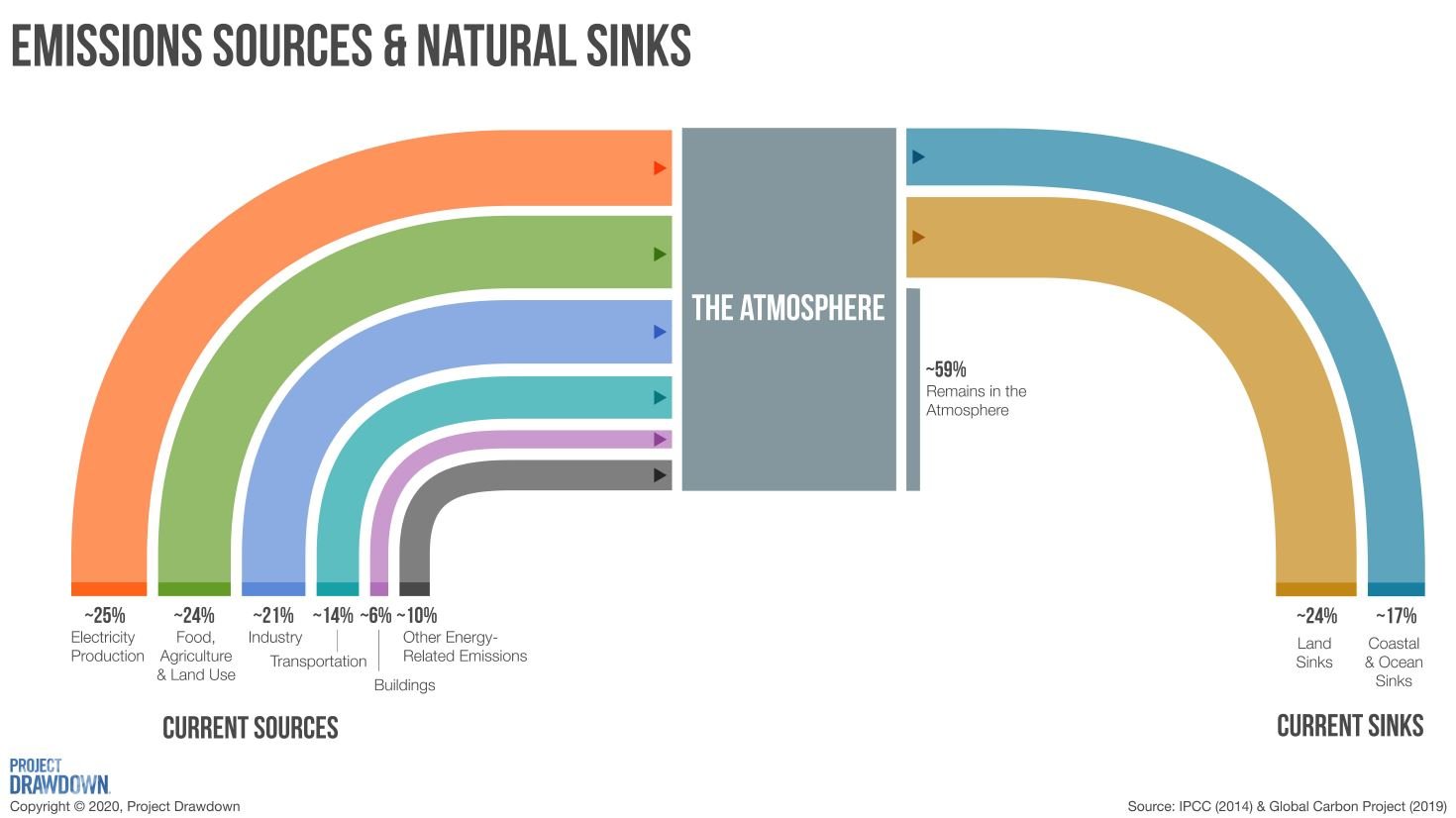Can Golf Courses Achieve a “Real Zero” Carbon Footprint?
Image via Project Drawdown
Recently in June 2022, NextEra Energy announced its ambitious but real plan -- a “Real Zero” Commitment that aims to decarbonize the energy company by 2045. That means not only reducing carbon footprint by using carbon offsets (as companies typically claim in their “net zero” commitments), but that NextEra is actually eliminating Scope 1 and Scope 2 carbon emissions from its operations by switching entirely to clean energy sources of solar, wind, and green hydrogen by 2045.
In honor of my recent privilege to join NextEra Energy as a Business Analyst, I feel inspired to explore ways for golf to “go low on the carbon scorecard”.
As if rapidly declining kWh prices of solar and wind were not enticing enough, the recent Inflation Reduction Act signed into law by the Biden Administration invests $369B into promoting clean energy infrastructure, energy efficiency, and other climate-smart initiatives. This means that it’s becoming increasingly feasible for golf courses not only to achieve a “net zero” carbon footprint (currently possible through offsets), but to achieve “Real Zero” (through total de-carbonization of energy inputs). In some instances, golf courses could even design themselves beyond a zero carbon footprint by becoming net sinks of carbon and actively restoring the atmosphere.
At the European Institute for Golf Course Architect (EIGCA)’s recent annual meeting in Iceland, the three biggest golf architecture societies (America, Europe, and Australia) pledged a commitment to climate action within the framework of the UN Sustainable Development Goals. This gathering was in order for golf courses to design a pathway to net zero emissions via:
Increasing knowledge
Enacting environmental stewardship
Encouraging research and innovation; and
Positively impacting communities and climate
EIGCA member and golf course architect Edwin Roald is leading Carbon Par – a series of scientific projects aimed at providing reliable measurements of the emissions (sources of carbon) and sequestration (sinks of carbon) on golf courses. According to American golf course architect Andy Staples’ CarbonSave® Calculator, and by plugging in median land use numbers from 2015 GCSAA data, the typical golf course draws 50 tons of carbon per year out of the atmosphere but still emits a net of 20.6 tons of CO2. With advancements in energy efficiency, reductions in other inputs, and implementation of regenerative design, golf could go beyond mitigating its effects on the climate, even helping to reverse atmospheric imbalances.
Here’s how golf courses can get to (and even beyond) Real Zero:
1. Save via energy efficiency and conservation (reduce)
Like any form of pollution, the first step to reducing carbon emissions is to stop wasting and polluting. This means investing in equipment and systems that operate as efficiently (and cheaply) as possible. Golf architect Andy Staples recommends replacing pumping systems to irrigate water with greater efficiency, for example. Conservation means simply using fewer resources – especially those that are not devoted to providing a better experience for golfers. For golf courses, optimizing efficiency means providing the best possible experience for golfers using minimal inputs and costs. Golf’s main inputs include irrigation water, chemicals, and energy inputs, all of which require greenhouse gasses in their value chain and ultimately run up the score on golf’s carbon scorecard… only when this scorecard gets high it will be melting snowmen by causing higher temperatures (rather than just penciling snowmen on the golf scorecard as most of us do). By the numbers above (shared in bold font), the typical golf course can achieve “net zero” through a roughly 60% reduction in energy consumption (and/or by sourcing such energy from clean and renewable resources).
2. Switch to clean energy sources (renewable generation)
A golf course is essentially a grassland ecosystem with some other plantings and trees. Therefore, most of the golf course is already solar powered… so why not follow-through all the way and achieve Real Zero? Solar and wind are now by far the cheapest sources of energy per kWh. Generating renewable energy on-site provides visibility to sustainability efforts while cutting energy bills. In many instances, it remains cheaper and easier to purchase your energy from the utility (and NextEra’s Florida Power & Light will source less and less carbon to its Floridian customers as it approaches the Real Zero commitment for 2045). However, in the near future, especially with tax credits for solar production and domestic manufacturing of solar generation components underway, it will make increasing sense (and cents) to produce your own energy.
3. Sink it to win (regenerate)
Yet another way to offset one’s carbon footprint is to design a way to capture carbon from the atmosphere. Some expensive technologies have been developed to accomplish just that, however the cheapest and most effective form of carbon storage is also the most natural: terrestrial ecosystems. Grass, trees, and other photosynthesizing plants compose most of a golf course. Not only are they powered by the sun (plants are the OG champions of solar power), but they also withdraw carbon from the atmosphere, into their cells and roots. Rather than contributing to global warming and climate change via the atmosphere, that sequestered carbon then contributes to regenerating healthier ground-level ecosystems and ultimately satisfying happier golfers. The recent Inflation Reduction Act also signs into law $20B of investment to enable climate-smart agricultural practices. Golf courses may soon be able to take advantage of tax credits in order to dedicate land to carbon sequestration through practices like agroforestry. By emitting less and sequestering more, golf can actually break par on the carbon scorecard, going beyond Real Zero and helping to correct atmospheric imbalances.

